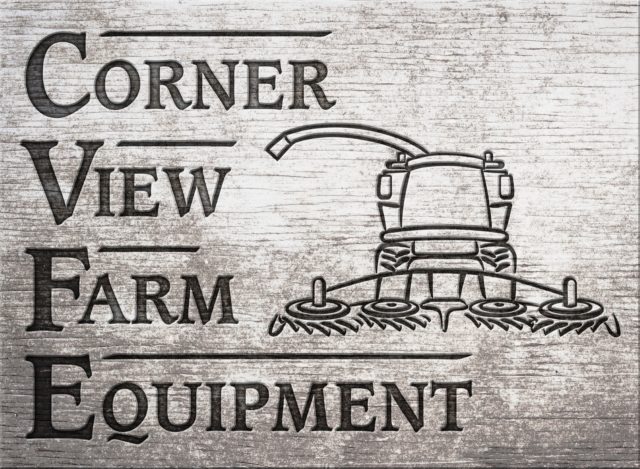Nutrition is the foundation of a healthy and productive herd, so formulating a ration that delivers the right nutrients to meet an animal’s needs is paramount.
I have the opportunity to work with five robotic herds, utilizing 25 robots, and have learned that when it comes to feeding robotic herds, the when and how of delivering those nutrients is crucial for success.
To ensure you’re setting a strong nutritional foundation for your robotic herd, remember the word “great,” and think of it as the acronym GREAT – goals, robot, energy, adjust and think.
Goals
When you meet with your nutritionist, be clear about your goals and how you measure success. While some producers might want to maximize production, others might want to minimize fetch cows. Both goals are valuable but will require different nutritional strategies.
Discussing whether you will measure production by milk per cow or milk per robot will also be important, as it will impact feed allocations. If measuring milk per cow, you will probably want a maximum of 55 cows per robot and seek to have at least 2.7 visits per cow per day.
If you measure milk per robot, you may want 60 or 62 cows per robot and settle for 2.2 visits per day and a little less milk per cow but more total milk and more milk per robot.
Clearly defining everything with your nutritionist up-front will help ensure the ration is formulated to help achieve these goals.
Also sharing why you chose to switch to robotics, what data you want your nutritionist to utilize from the robot and any management concerns (i.e., pushing up feed) at the onset can help limit issues later on.
Robot
To dispense the proper amount of feed to each cow, the robot must be properly calibrated. If this is not done, the actual amount of feed dispensed will not meet that which is programmed.
Remember, the robot is an expensive piece of equipment that can break down and requires routine maintenance and calibration checks to help ensure the robot is dispensing the proper amount of feed. If there are any signs of production or health issues, check the calibrations right away to be sure the cow is actually receiving the correct amount of feed.
Energy
Barn design and cow flow have a significant impact on the feeding program and ultimately designate where and when cows consume most of the energy from the ration.
In a free-flow system, the energy level of the feed present at the bunk must be low enough that most cows cannot meet their energy need from the bunk mix alone.
This means the level of grain must be restricted in the bunk mix, which is referred to as a partial mixed ration (PMR) rather than a TMR because part of the ration components are missing from the bunk mix and are fed at the milking station.
The relatively low energy level of the PMR causes cows to seek additional energy by visiting the milking station, where they will be given grain or a pellet. With a free-flow system, higher producers are given significantly more grain to meet their higher energy needs.
Typically, PMRs in free-flow systems are balanced to meet the energy requirements of a production level 15 pounds less than actual (or potential). This often means roughly half of the grain is fed as part of the PMR and the other half at the milking station.
In a guided-flow, milk-first system, once a cow moves to the stall area, she can get no feed in any form until first going to the milking station. Thus, the energy in the PMR can be relatively high because she cannot use it to meet her energy needs unless she visits the robot first, which ensures she visits frequently enough to get milked regularly.
Adjust
Monitor performance and adjust the ration to ensure the best nutritional strategy to meet the shifting needs of the herd. There are many data points a robot can monitor, and the “rest feed” is a key performance indicator that can help measure the success of the ration at the milking station.
Rest feed refers to feed available but not dispensed. It should be no more than 5 percent of the total feed available.
Greater than 5 percent usually indicates too many cows not coming in frequently enough to get their full allotment of grain, and this could indicate an issue with palatability or texture. The robot can also be programmed to make some adjustments automatically based on milk production, visits to the milking station and other indicators as programmed.
Work closely with your nutritionist to program automatic adjustments and performance indicators for the nutrition program as a whole.
Think
Think strategically about homegrown forages. There are many factors to consider when deciding which forages to grow on-farm, but the ultimate driver should be ensuring they provide cows with the nutrients they require to maintain health and productivity.
Your nutritionist can help you analyze the different types of ingredients that can be consumed in the PMR, and at the robot, and the quantities of each that can be consumed at beneficial levels.
Keeping these areas in focus and working closely with your nutritionist and management team can help ensure a great outcome for your herd health, productivity and peace of mind. PD
Nicole Colgren is a dairy focus consultant with Cargill Animal Nutrition. Email Nicole Colgren.
Robot feed: Pellets vs. meal
While it’s possible to utilize pellets, meal or textured feeds at the milking station, pellets are recommended for the following key reasons:
- Pellets are quickly consumed within the time allotted for milking, minimizing the amount of time the cow will linger at the robot.
- Pellets ensure a consistent nutrient package in every bite, and they don’t allow the cow to sort out ingredients. Sorting varies the amount of nutrients actually delivered, impacting production and health.
- Pellets provide higher control over consistent texture and palatability, which is crucial to bringing the cow back for future milking.
- In order to avoid acidosis from even the limited feed available per visit, the feed at the milking station needs to be carefully balanced to provide the ideal amount of starch.





